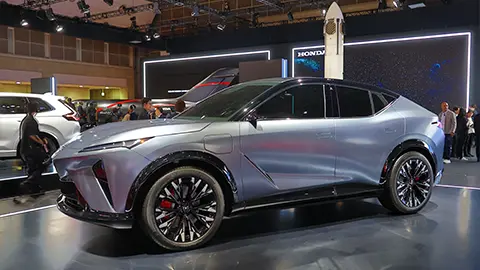Fast Facts | GM’s Infotainment Overhaul
🔧 Platform: Android Automotive OS (customized)
🗓️ Phase-Out Began: 2023 (Chevy Blazer EV, Cadillac Lyriq)
💬 CEO: Mary Barra
📲 Goal: Unified, safer, in-house infotainment
💰 Strategy: Subscription and data-driven revenue
GM Bets on Its Own Software Future
General Motors has stated that switching away from Apple CarPlay and Android Auto to control infotainment systems in all its vehicles, in favor of its own system, is the way to go while come consumers have voiced frustration over losing these popular features.
GM sees the Apple and Android software systems as a source of driver distraction, thinking that a single, integrated system will be both safer and more efficient. By using its own platform, the automaker can collect data which will allow it to improve vehicle performance and features.
Bottom line is that GM believes using its own system offers a better use of information that would be going to outside tech companies. The move is part of a larger GM strategy to turn its vehicles into “software-defined platforms” that can be easily updated, plus generate new revenue streams for GM through consumer use of subscriptions and in-car services.

General Motors CEO Mary Barra tells us the move will eventually cover the company’s entire range including gasoline and hybrid models as the company transitions to its fully integrated in-house infotainment system.
The phase out began in 2023 when GM pulled Apple CarPlay and Android Auto out of its Chevy Blazer EV and Cadillac Lyric models. Now the switch will extend to all models and will be powered by Google’s Android Automotive OS platform supported by a custom app store, voice assistant, and cloud-based navigation.
Mixed Reactions From Drivers and Rivals
So far, the removal of Apple CarPlay and Android Auto from GM vehicles has been met with frustration from many customers who see it as taking away a popular feature that they rely on. Adding to the frustration is that GM has blocked aftermarket solutions that have attempted to restore CarPlay to its newer EVs, leaving consumers with no easy alternative for the features.
Other major automakers are also thinking about having their own in-house system for infotainment control. They are wary of giving up dashboard control to outside software companies and are developing their own systems. It is thought that the new Apple CarPlay Ultra system will only accelerate this trend as it is set to replace entire vehicle interfaces.
Barra has described traditional smartphone mirroring as “fragmented” saying that customers switching between native vehicle software and their phones disrupts the flow of connected features such as navigation and driver assistance. She sees the switch to the in-house system will provide a smoother, safer, and more unified user experience.
On the other hand, many consumers have embraced Apple CarPlay and Android Auto and enjoy their reliability. GM’s decision could possibly alienate some of it’s more tech-minded buyers who want these features in a vehicle they might own for over a decade.
What GM Has to Prove Next
As of this writing, GM is poised right next to Tesla as top dog in the U.S. market and believes that controlling its digital interface will build an advantage in software-dominant cars. Says Craig Daitch Founder and CEO of Telemetry Agency, a strategic communications firm, “If GM is going to replace Apple CarPlay, what is their iPhone moment? I haven’t seen it yet. What’s gonna wow me?”
🔧 More on GM’s EV and Tech Strategy
- 2025 Cadillac Optiq: Full Details and Pricing
Cadillac’s newest electric SUV adds accessible luxury and GM’s most refined tech platform yet.
Read More ➜ - 2025 GMC Sierra EV Denali: All-Electric Pickup Power
The Sierra EV brings serious range, towing capability, and a software-rich cabin experience.
Read More ➜ - Driving the 2025 Cadillac Escalade IQ: Cadillac’s Biggest, Boldest EV Yet
Behind the wheel of GM’s ultimate luxury EV—massive presence, high tech, and next-gen infotainment.
Read More ➜
















